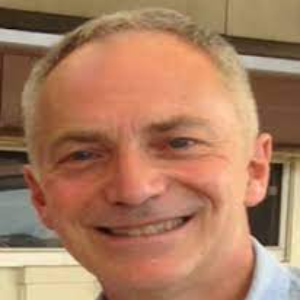Title : Development of receptor targeted nanocomplexes for delivery of RNA therapeutics to the lung
Abstract:
Cystic Fibrosis (CF) is caused by mutations in the cystic fibrosis transmembrane conductance regulator gene (CFTR), encoding a cyclic AMP-activated chloride channel. CFTR deficiency also regulates the epithelial sodium channel, ENaC, leading to increased sodium and water absorption from the overlaying airway surface liquid leading to thickened mucus and impaired mucociliary clearance allowing bacterial infections to become established that contribute to the CF lung pathology. We are investigating novel nucleic acid based therapies for CF including inhibition of ENaC by RNA inhibition (RNAi), and correction of the CFTR protein deficiency by mRNA therapy or gene editing. Delivery of nucleic acids to the lung is particularly challenging and so our aims were; 1) to develop and optimise targeted RNA containing nanocomplexes for penetration of mucus and epithelial cell transfection; 2) evaluate molecular and functional effects of nucleic acid therapeutics in air-liquid interface (ALI) cell culture models of the human airway epithelium and; 3) assess translational potential by transfection of mice lungs. We are developing nanocomplexes (called RTNs) that are optimized for lung transfection. RTNs comprise formulations of liposomes and epithelial receptor-targeting peptides which self-assemble on mixing with siRNA or mRNA although the optimal composition varies with the type of RNA. The biophysical properties and transfection efficiency of RTNs were unaltered by nebulisation offering a convenient route for delivery. Modifying the surface properties of the nanocomplexes altered their diffusion properties in mucus with anionic surface charge or PEGylation of cationic formulations providing enhanced mobility in mucus. Thus, the surface properties of the RTNs appear to facilitate transit through mucus. ENaC silencing levels of 30% were achieved with RTN siRNAnanocomplexes in human CF cells grown in ALI cultures which was sufficient to correct the electrical properties of the epithelium and led to rehydration of the mucus and fluids above the epithelium and restoration of normal cilia beating frequency (CBF). In vivo, transfections in normal mice showed single doses of siRNA delivered by oropharyngeal instillation in mouse lung silenced αENaC by ~30%, while three doses of siRNA delivered at 48 h intervals resulted in ~60% silencing, similar to ALI transfection data. Silencing persisted for at least 7 days and all the mice tolerated well the dosing with RTNs as shown histologically suggesting benefits of persistence and safety. RTNs containing mRNA encoding luciferase displayed expression levels more than 200-fold higher than with plasmid DNA and with much lower levels of inflammation. The RTNs with siRNA and mRNA described here are compatible with airway delivery and possess properties that enable then to overcome mucociliary barriers leading to efficient silencing of ENaC or expression of proteins encoded by mRNA in vitro and in vivo. ENaC silencing restored epithelial hydration and ciliary function. These results support the hypothesis of RNA based therapies for CF and demonstrate a method of delivery.
Takeaway Notes:
•Design of nanoparticles for penetration of mucus
•Design of nanoparticles for packaging and delivery of siRNA and mRNA.
•Functional correction assays in cell culture for cystic fibrosis



